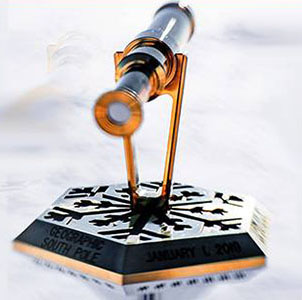|
Astronomy (Again) Makes its Mark at the South Pole 
National Science Foundation Posted March 18, 2019 Image: Andrea Dixon / NSF Each year, because the ice sheet moves roughly 30 feet a year, it is necessary to mark the location of the South Pole in Antarctica. And each year, the community of researchers and research-support personnel who spend the Southern Hemisphere winter at NSF’s Amundsen-Scott South Pole Station create a unique ceremonial marker that is unveiled on Jan. 1. This year’s marker was designed and fabricated by machinist Steele Diggles. Its design was inspired by the role played by astrophysics research at the South Pole. The Pole is home to the 10-meter South Pole Telescope and the IceCube Neutrino Observatory as well as other experiments. The marker itself is oriented to point toward the actual telescopes, roughly a kilometer away from the station.
|



For USAP Participants |
For The Public |
For Researchers and EducatorsContact UsU.S. National Science FoundationOffice of Polar Programs Geosciences Directorate 2415 Eisenhower Avenue, Suite W7100 Alexandria, VA 22314 Sign up for the NSF Office of Polar Programs newsletter and events. Feedback Form |
